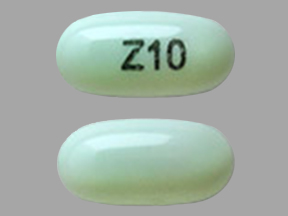Paricalcitol Disease Interactions
There are 4 disease interactions with paricalcitol.
Paricalcitol (applies to paricalcitol) arrhythmia
Major Potential Hazard, Moderate plausibility. Applicable conditions: Arrhythmias
Paricalcitol, a vitamin D analog, reduces hyperparathyroidism associated with chronic renal failure without significant increase in serum calcium levels. Serum calcium and phosphate concentrations can increase during therapy with paricalcitol and may exacerbate arrhythmias, particularly in patients receiving cardiac glycosides. Therapy with vitamin D analogs should be administered cautiously in patients with or predisposed to cardiac arrhythmias. Clinical monitoring of serum electrolyte concentrations and cardiac function is recommended. .
Vitamin D analogs (applies to paricalcitol) electrolyte imbalance
Major Potential Hazard, High plausibility. Applicable conditions: Phosphate Imbalance
Vitamin D analogs administered in the presence of hyperphosphatemia can result in precipitation of calcium-phosphate deposits within the vascular or renal systems or other soft tissue calcifications. A solubility product (Serum Calcium X Phosphate) should not exceed 70. Serum electrolyte concentrations should be corrected prior to vitamin D analog therapy and monitored during therapy.
Vitamin D analogs (applies to paricalcitol) hypercalcemia
Major Potential Hazard, Moderate plausibility. Applicable conditions: Malabsorption Syndrome
Vitamin D analogs such as calciferol and ergocalciferol should not be given to patients with hypercalcemia, malabsorption syndrome, or evidence of vitamin D toxicity.
Paricalcitol (applies to paricalcitol) hepatobiliary dysfunction
Moderate Potential Hazard, Moderate plausibility. Applicable conditions: Biliary Obstruction, Liver Disease
Paricalcitol is metabolized by the liver. Parent compound and metabolites are primarily eliminated by in the bile and feces. Paricalcitol metabolites have not been characterized or identified. Metabolic and therapeutic activity of paricalcitol may be altered in patients with hepatic impairment. Therapy with paricalcitol should be administered cautiously in patients with hepatobiliary dysfunction. Clinical monitoring of hepatobiliary function, parathyroid hormone and calcium levels is recommended.
Switch to professional interaction data
Paricalcitol drug interactions
There are 158 drug interactions with paricalcitol.
Paricalcitol alcohol/food interactions
There is 1 alcohol/food interaction with paricalcitol.
More about paricalcitol
- paricalcitol consumer information
- Check interactions
- Compare alternatives
- Pricing & coupons
- Drug images
- Side effects
- Dosage information
- During pregnancy
- Drug class: vitamins
- En español
Related treatment guides
Drug Interaction Classification
| Highly clinically significant. Avoid combinations; the risk of the interaction outweighs the benefit. | |
| Moderately clinically significant. Usually avoid combinations; use it only under special circumstances. | |
| Minimally clinically significant. Minimize risk; assess risk and consider an alternative drug, take steps to circumvent the interaction risk and/or institute a monitoring plan. | |
| No interaction information available. |
See also:
Further information
Always consult your healthcare provider to ensure the information displayed on this page applies to your personal circumstances.


